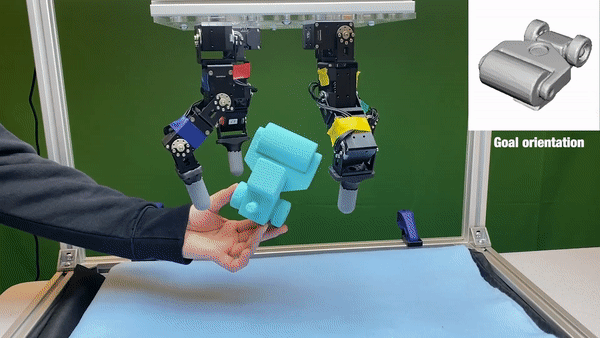[ad_1]
The practical application of robotic technology in automatic assembly processes holds immense value. However, traditional robotic systems have struggled to adapt to the demands of production environments characterized by high-mix, low-volume manufacturing. Robotic learning presents a potential solution to this challenge by enabling robots to acquire assembly skills through demonstration rather than scripted trajectories, thus enhancing adaptability and flexibility. However, teaching robots to perform assembly tasks solely from raw sensor data remains a formidable challenge due to the complex and precise nature of such tasks, necessitating innovative approaches to training and learning.
Researchers have explored various strategies to address the difficulties inherent in training robots for assembly tasks using raw perception, including Reinforcement Learning (RL) and Imitation Learning (IL). While RL offers a mechanism for learning from trial and error, it struggles with long task horizons and sparse rewards, making it less suitable for assembly tasks. In contrast, IL, particularly in a small-data regime, enables users to collect demonstration data themselves, thereby alleviating the data collection burden. Despite its advantages, effectively utilizing IL with a limited dataset poses its own set of challenges.
One major challenge is fitting a complex set of demonstrated actions while operating from raw images, particularly for long-horizon tasks requiring high precision. The choice of policy architecture and action prediction mechanism significantly influences the model’s ability to learn from the data effectively. Recent work suggests that representing policies as conditional diffusion models and predicting chunks of multiple future actions can improve performance in such scenarios.
Additionally, learning robust behaviors around “bottleneck” regions, where slight imprecisions can lead to failure, presents another significant challenge. To mitigate this, structured data augmentation and noising techniques have been proposed, focusing on supervising the model with corrective actions that return to the training distribution from perturbed states.
One innovative strategy involves deploying automatic resets to bottleneck states, perturbing the scene by simulating “disassembly” actions, and synthesizing corrective actions by reversing the disassembly sequence. This approach enables structured data noising in a broader class of scenarios and enhances the model’s robustness to environmental variations.
Moreover, opportunities to automatically expand the dataset of whole trajectories have been explored, leveraging iterative model development cycles across tasks. By collecting successful or partially successful rollouts during model evaluation and incorporating new data from parallel tasks, the dataset size can be expanded without additional human effort.
In summary, the proposed pipeline, named JUICER, offers a comprehensive approach to learning high-precision manipulation from a few demonstrations. By combining diffusion policy architectures with mechanisms for dataset expansion via data noising and iterative model development cycles, JUICER demonstrates significant improvements in overall task success compared to baseline methods. The provided tools and datasets empower the research community to further explore and build upon these advancements in robotic learning for assembly tasks.
Check out the Paper. All credit for this research goes to the researchers of this project. Also, don’t forget to follow us on Twitter. Join our Telegram Channel, Discord Channel, and LinkedIn Group.
If you like our work, you will love our newsletter..
Don’t Forget to join our 40k+ ML SubReddit
Arshad is an intern at MarktechPost. He is currently pursuing his Int. MSc Physics from the Indian Institute of Technology Kharagpur. Understanding things to the fundamental level leads to new discoveries which lead to advancement in technology. He is passionate about understanding the nature fundamentally with the help of tools like mathematical models, ML models and AI.
[ad_2]
Source link



